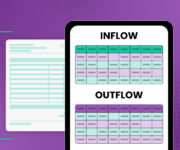With a targeted focus on the on-ground implementation of the Aadhaar program as well as Jan Dhan Yojana, India has been prosperous in spreading the banking facilities successfully throughout the economy. To add to the potent mix, The Unified Payments Interface (UPI) was introduced by National Payments Corporation of India (NPCI) in 2016.
The Unified Payment Interface or what is more popularly known as UPI, has seen a consistent surge in its popularity since its inception in 2016. UPI system allows full-scale interoperability as well as the instant real-time transfer of funds through a mobile number associated with a bank account.
NPCI has learnt from the massive adoption of the UPI technology in the Indian subcontinent. It has further decided to stay ahead of the curve with UPI 2.0, which is essentially an upgraded version of the UPI interface. Experts believe it will revolutionise growth and bless users with stellar user experience with its set of advanced features. It is also a great step toward financial inclusion in India.
What is UPI?
NCPI is an umbrella organisation under which all retail payment systems in the country function. NCPI developed the UPI system to facilitate inter-bank transactions. Unified Payments Interface is a vivid real-time payment system. It makes it possible to conduct instant fund transfer between two bank accounts, even without a beneficiary’s account number. A user can link various bank accounts to a single mobile banking app with UPI technology. It enables users to receive or request money seamlessly.
How is UPI 2.0 Any Different than UPI?
NCPI launched the second version of the fund transfer platform in August 2018. The new UPI 2.0 version enhances the way peer-to-peer transactions are conducted. The UPI 2.0 structure also accommodates merchant payments.
Here are some other unique features and benefits that the newly introduced and upgraded UPI 2.0 offers:
One-Time Mandate
Using the latest version of Unified Payment Interface, users can also pre-authorise a transaction and pay on a later date effortlessly. UPI 2.0 mandates are designed to feature a one-time block functionality, i.e., transactions can be processed later while committing at present. This feature adds to the convenience of individuals and merchants due to the instant generation of mandates and automatic deduction of payments on the authorised date.
Invoice Verification
With UPI 2.0, online invoices can be dispatched to the customers from the merchants. This allows customers to view the order amount in addition to other relevant details like the credentials of the merchant, before making any payment. Customers can, in turn, make the payment directly to the merchants after thoroughly verifying the details shared in the invoice. As merchants need to be registered with the UPI ecosystem to leverage UPI 2.0 benefits, customers can check the authenticity of merchants by scanning the merchant’s QR code. Such additional security features for customers, improve the overall authenticity of transactions. This limits the possibility of any fraudulent transactions. In addition to digital operations, digital invoicing at micro-level allows aggregation and analysis of data at the merchant level.
Overdraft Account Linking
Initially, UPI allowed users to link their savings and current accounts only. However, with UPI 2.0, they can also link their overdraft account for instant transactions. The revamped version of UPI facilitates access to the overdraft accounts of the users and digital channelising of their payments. The UPI 2.0 comes with a transaction limit for UPI 2.0 that has been raised from Rs 1 lakh previously to Rs 2 lakh.
It helps individuals in need of short-term credit facilities. With a reduction in the physical collection efforts of the BFSI industry, UPI 2.0 can push the digital collection of small-ticket loans. Cyclical processes for collection request generation make UPI 2.0 the perfect recluse for lenders. Lenders can also auto-generate EMI statements with collection requests and send them to customers for verification. UPI 2.0 also allows customers to authorise the transaction for instant EMI repayment.
Signed Intent and QR-Based Security
Buyers can check the authenticity of merchants by scanning Quick-response codes. UPI 2.0 issues notification for the benefit of the user and equips them with information to help determine if the merchant is a verified UPI merchant or not.
UPI 2.0, with all its virtuous features and functionality, has the potential to accelerate and drive change speedily. NPCI has pledged to expand the service beyond smartphone users and take it to the 500 million-strong feature phone Indian users. This will open up unique avenues for industries like E-commerce, Travel & Hospitality, Health-care and in particular the Micro-merchant & Retailer segments throughout the country.
To Sum Up
The unprecedented advent of the COVID-19 pandemic has led the country to unforeseen challenges. In such circumstances, the digital payment systems, in particular, the UPI system is facilitating contactless funds to rural and urban customers, helping them be socially distant. In May 2020, the UPI transactions surged drastically. Thanks to UPI 2.0, there is now a diminished need for the point-of-sale machines. It also accounts for massive savings in physical distribution, servicing and collection efforts of banks.
The Central Board of Direct Taxes (CBDT) has sent across a notification ordering companies with a turnover of ₹50 crores plus to incorporate the Unified Payments Interface (UPI) and RuPay debit cards as a payment method in their system. With COVID-19 being touted as the ‘new normal‘, innovative solutions like UPI India are progressing on the path of complete financial inclusion.




[…] the runaway success of the Unified Payments Interface (UPI) mobile payments platform, India is moving forward with the next stage of digitising its […]